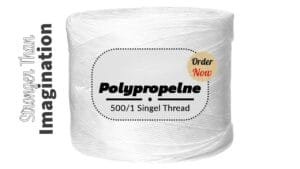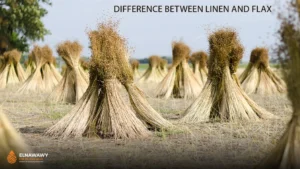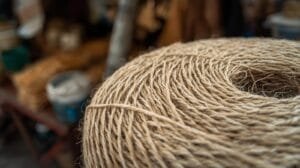Egyptian linen has long been regarded as the “fabric of the gods.” It was considered to be of such high quality that it would pass as a benchmark of excellence anywhere around the globe. The superiority of this luxury fabric lies in its uniqueness when combined with softness, durability, and eco-friendliness.
Starting with its first time being cultivated, then running along the rich banks of the Nile River until the contribution for modern sustainable lifestyle movements, the appeal of Egyptian linen to design and manufacturing interests worldwide has just begun. Read in this deeply exploratory feature the origin and extra-exceptional qualities Egyptian Linen can gift the eco-conscious, as well as the quality-conscious.
Table of Contents
The Ancient Legacy of Egyptian Linen
Egyptian linen dates to the cradle of civilization over 7,000 years ago. Flax was the primary source that originated from and was an integral part of life and culture for the ancient Egyptians. Such fabric is lightweight and breathable, so good for the dry desert climate, yet tough enough to be used in such matters as clothing and home furnishings.
Spiritual significance was also given to linen. In ancient Egypt, it represented purity and was used in religious rituals. Priests were decked out in white linen robes, and textiles still played a great role in burial.
The linen shroud in which mummies were wrapped ensured their preservation in the afterlife. The quality of such textiles unearthed from archaeological sites speaks of craftsmanship that inspires admiration even today.
The Nile Delta: A Land Fit for Flax to Flourish
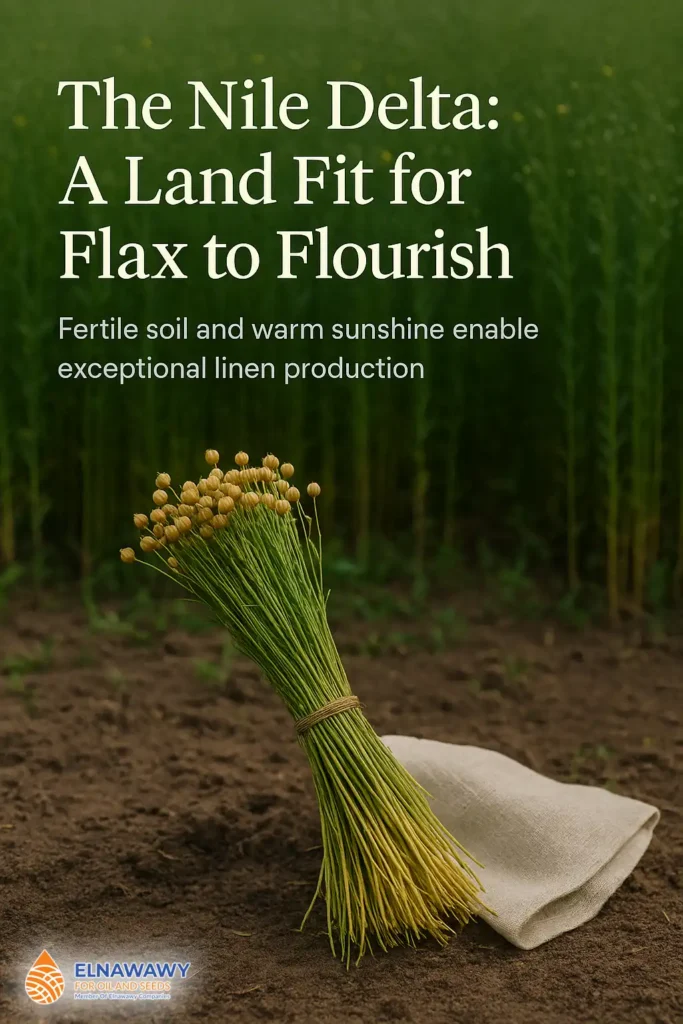
Why the quality of linen produced by Egypt is exceptional can be explained with reference to this land. Every year, in the Nile Delta, fresh land is regained as the river overflows and fills the plains with the fertile sediments it bears along. Ideal soil combined with warm sunshine in Egypt makes for the flax fiber to grow a good number of feet long and thin.
Unlike the regions whose climates change from season to season, in Egypt, constant temperatures and scarce rainfall give a uniform crop. The consistency of the quality of flax grown here is what gives Egyptian linen its legendary softness, strength, and sheen.
Find Out More: 7 Irresistible Reasons to Love Natural Linen Yarn
Traditional and Modern Flax Farming Practices
Traditional Methods
Flax cultivation has been historically performed manually in Egypt. Harvesting the crops involved careful hand harvesting to prevent damage to the flax fibers. Retting is the process of soaking flax stalks in water, which loosens the fibers from the stems.
The Nile has slow-moving water, ideal for high-quality retting and leaving the flax fibers with their natural shine and strength.
Present Practices
Of course, the technology used in flax farming has also been mechanized. However, Egyptian producers would still retain their traditional methods for maintaining the integrity of the fabric.
Modern advances focus on responsible farming, such as safe water use and reduced pesticide applications. Seed selection has also improved to ensure that even greater fibers will be acquired.
Find Out More: Linen Butcher’s Kitchen Twine: 5 Irresistible
Linen by Variety: What Makes Egyptian Linen So Unique
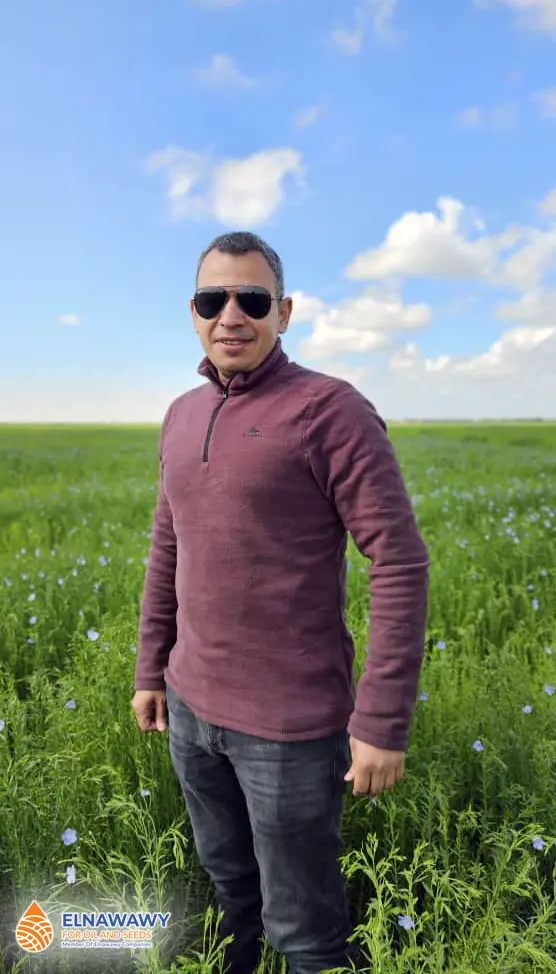
Egyptian Linen vs European Linen
- Fiber Length and Softness: Long fibers in Egyptian linen assure softer and more durable fabrics than those of European linen, which will be made up of many shorter fibers.
- Weaving Techniques: Both emphasize the skill of craftsmanship, but the handwoven tradition in Egypt produces a different finish.
- Environmental Impact: Both are sustainable, but natural irrigation in Egyptian linen reduces carbon footprint.
Egyptian Linen vs Canadian Linen
- Characteristics of the Fiber: Canadian flax plants, grown for a shorter period, result in coarser fibers.
- Production Level: The Canadian linen demonstrates mass production with machines, possibly compromising quality compared to the Egyptian manual process.
Egyptian Linen vs Chinese Linen
- Consistency in Quality: Egyptian climatic conditions guarantee consistent fiber quality. China has vast regions and variable climatic conditions, resulting in inconsistent quality fibers.
- Mass Production: Chinese linen is relatively more prevalent and potentially less refined in texture and less durable compared with Egyptian linen.
Egyptian Linen: Sustainable Choice
Egyptian linen has earned the right to boast of environmentally friendly production techniques. Natural Nile flooding ensures that irrigation through artificial sources is not needed, and age-old farming methods limit chemical applications. The fabric also degrades and reuses, thereby becoming an environmentally friendly option for those conscious about their surroundings.
Also, it takes less input to produce linen than cotton, making it even more friendly to the environment. Wearing Egyptian linen supports better farming and thus contributes to a greener textile industry.
Wide Application of Egyptian Linen
The utilization of Egyptian linen is very diverse; as a result, it has many applications.
- Clothing: The most common material used for summer dresses is linen, which is the most favorite among people because of its softness and durability. It is also high-class fashion and formal since it is both charming and comfortable.
- Home Textiles: The linen is also very easy to take care of, as one can also use it as bedsheets and curtains, and other home stuff, since it is both strong and durable.
- Accessories: Linen purses, scarves, and even shoes are just the tip of the iceberg when it comes to using linen because it is so versatile.
- Specialized Uses: In even the most luxurious of hotels, the Indian-made high-thread-count sheets are being used to ensure guests travel the world in a truly luxurious manner.
Find Out More: Best Linen Yarn for Knitting 2025
Cultural and Symbolic Importance of Linen in Egypt
On the one hand, linen is not only a fabric but is also a key to the national historic heritage of the country. The meanings of clean, light, and living are, in fact, the transcription of ancient doctrines which, though long gone, still make themselves felt in the present.
The fact that linen is still considered a means of showing the Egyptians’ armory of inventions and arts is worth telling in the post-modern world.
How to Identify Genuine Egyptian Linen
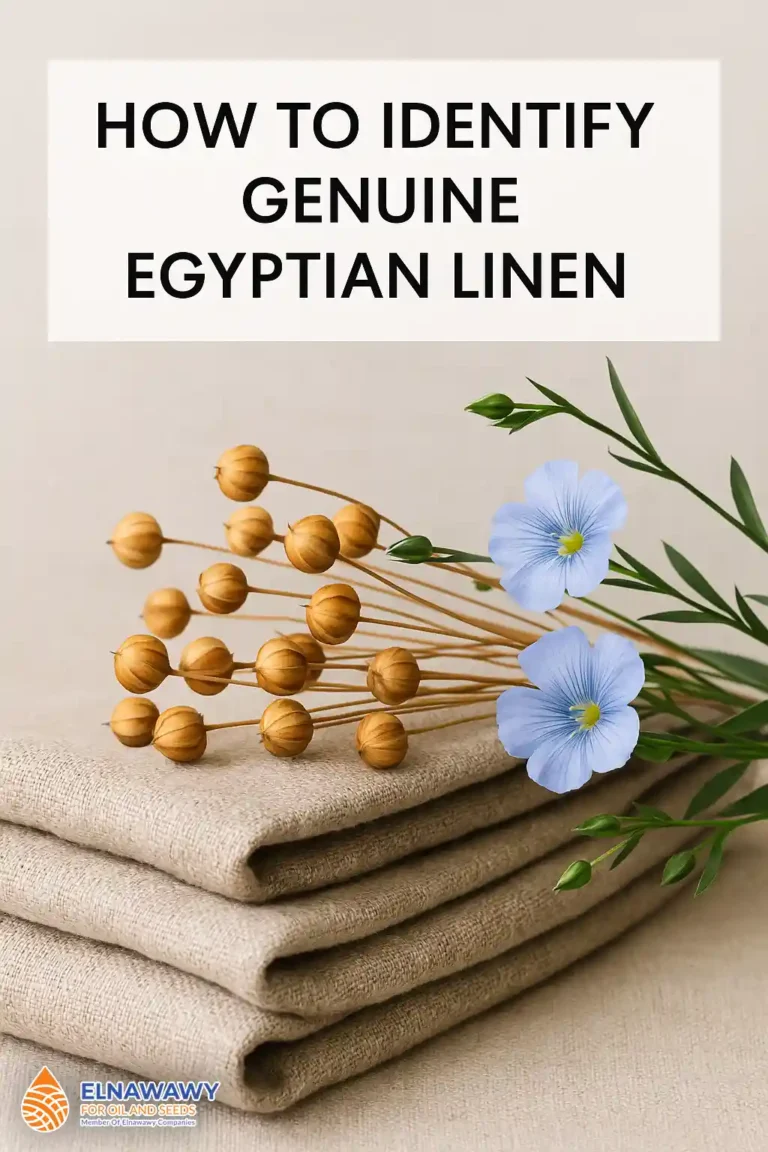
The first rule is to familiarize yourself with the qualities unique to genuine Egyptian linen, and something that is produced in or apparently “made in Egypt”, but the quality is dubious:
- Consider whether GOTS (Global Organic Textile Standard) and OEKO-TEX® certifications are available.
- Refer to the label that says “Manufactured in Egypt” or “100% Egyptian Linen” on the product container you are purchasing.
- Go for the reputable stores that have real Egyptian items.
Care for Your Egyptian Linen Products
Proactive care serves as an influencing factor to optimize the lifespan of your Egyptian linens.
- Wash: To keep the fibers from breaking, use cold water and a mild detergent.
- Dry: If you allow your things to dry in the sun and breeze, they will last longer; alternatively, you can also set the tumbler on a low setting.
- Iron: In case it is required, do the ironing when the cloth is still partly wet to get the best finish.
Q&A: Frequently Asked Questions
Q1: Why is Egyptian linen so expensive?
One of the reasons is the fact that it is obtained from the time-consuming processes of the cultivation, harvesting, and conversion to the final product. Besides, its sustainability and exceptional quality ensure that it is very durable for a long time.
Q2: Is linen suitable for all seasons?
Yes. The natural fibers of linen are well-known as thermoregulators because of their breathability for hot weather and their insulation against cold.
Q3: Can Egyptian linen be dyed?
Yes, Dyes deeply penetrate the natural fibers of the linen, which, in turn, reflect color so rich that it lasts for long periods.
Q4:Is all linen hypoallergenic?
Although most linen is hypoallergenic, Egyptian linen, because of almost no chemicals used in the production, is the best choice.
Q5:How can I tell the difference between Egyptian and regular linen?
Find Out More: Linen: 10 Must-Know Tips to Transform Flax into Luxury
Conclusion
Egyptian linen has gone beyond all earlier expectations, and now the linen is, in point of fact, an emblem of elegance, ecological equilibrium, and astuteness. This linen is soft to the touch, it’s breathable, and it’s very durable; thus, consumers like it very much, while the rich heritage of the material and environmentally friendly cultivation practices make it an example of green technologies on a global level.
By purchasing a product of exquisite craftsmanship, you will not merely be investing in a useful product but also in a future where our actions are sustainable. For those who are in need of home use, dressing up, or even professional work, Egyptian linen implies, therefore, a kind of timeless elegance unmatched by any other fabric.


